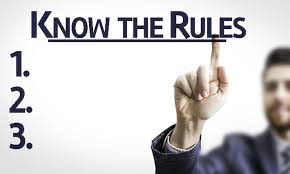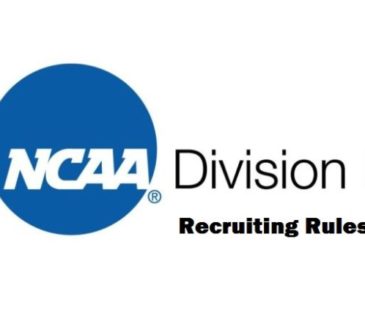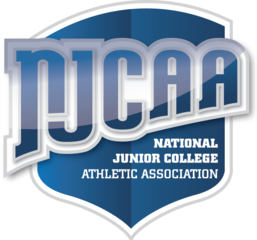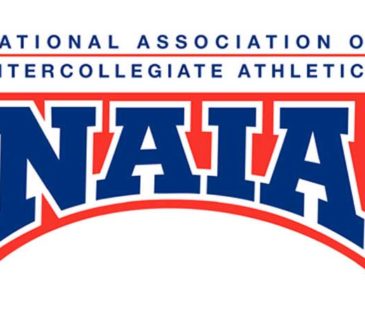
The NCAA recruiting rules can be detailed and tricky to understand. One of the most common questions families ask is when college coaches can start contacting their athletes. For most sports, coaches can begin reaching out to athletes starting June 15 after sophomore year or September 1 of their junior year of high school.
More specifically, coach contact depends on your sport, age, division level and the type of communication. The NCAA recruiting rules are designed to limit the amount of communication Student-Athletes receive from coaches and them time to make an informed decision about where they want to go to college. AllStarRecruits has created a guide to help you understand when you can expect to hear from college coaches, based on your sport and desired division level.
Insider Tip: While neither athletes nor coaches can initiate phone conversations until June 15 of the athlete’s sophomore year or Sept 1 of their junior year, college coaches are still going to build their recruiting classes prior to that date through online research, events and communication with athletes’ coaches. Having an online profile is critical for athletes to get evaluated early. Athletes can also initiate communication by emailing coaches of programs they are interested in as early as possible. Send them a link to your Online Athletic Profile or your Digital Athletic Profile, which includes:
- Sport-specific stats and achievements
- Academic highlights and information
- Your highlight video
- Why you are a good fit for their program
When the NCAA recruiting rules allow coaches to contact you, you will already be on their radar. Once your sport’s contact period begins, be sure to follow up communications with a phone call.
When can Division I coaches contact athletes?
Generally speaking, DI coaches can send athletes non-recruiting material like recruiting questionnaires, camp brochures, and non-athletic institutional publications at any time. Serious recruiting contact begins either June 15 after sophomore year or September 1 of junior year, depending on the sport and division level. Keep reading to find your Sport and the Rules.
Insider Tip: Athletes can always communicate with college coaches through their club or high school coach and send emails and texts to coaches. They just will not get a direct response from coaches until their sport’s contact period begins.
Division I Football NCAA Recruiting Rules
- Any time: Athletes can receive non-recruiting materials from college coaches, such as questionnaires, camp brochures, nonathletic institutional publications and NCAA educational materials published by the NCAA.
- Verbal offers: There are no restrictions on when coaches can extend verbal offers to recruits.
- September 1 of junior year: Athletes can receive any form of private communication. This includes emails, recruiting materials, texts and direct messages on social media.
- April 1 through Sunday before the last Wednesday in June of junior year: Athletes can take one official visit as long as it is not taken in conjunction with their participation in the college’s camps or clinics. Athletes can take a total of five official visits.
- April 15 through May 31 of junior year: NCAA recruiting rules mandate that, during this time, coaches can call athletes one time. Additional calls can be made after September 1 of the athlete’s senior year.
- July 1 going into senior year: Coaches can contact athletes off campus (limited to the NCAA Recruiting Calendar’s contact periods).
- First day of classes senior year: Athletes can take official visits, with a maximum of five total official visits per student-athlete.
- September 1 of senior year: Coaches can call athletes once a week after this time, and they can call recruits unlimited times during the contact period.
- The athlete’s senior year, coaches can initiate off-campus contact with the athletes and/or their parents up to six times.
- During athletes’ senior year, coaches can evaluate each recruit once during September, October and November. They can conduct two evaluations per athlete (one to determine an athlete’s athletic ability and the other to determine academic qualifications) between April 15 and May 31.
Division I Men’s Basketball NCAA Recruiting Rules
- Any time: Athletes can receive non-recruiting materials from college coaches, such as questionnaires, camp brochures, nonathletic institutional publications and NCAA educational materials published by the NCAA.
- Verbal offers: There are no restrictions on when coaches can extend verbal offers to recruits.
- June 15 after sophomore year: Coaches can call, email, text, direct message and correspond with athletes in any form of private communication. Calls from coaches to athletes are unlimited at this time except during dead and quiet periods.
- Start of classes junior year: Coaches can initiate off-campus contact. Except during the April recruiting period, coaches can only conduct off-campus contact at the recruit’s school or residence. Contact cannot occur the day of a competition or at a time during the day when the athlete’s classes are in session.
- January 1 of junior year: Recruits can begin official visits, with a maximum of five total official visits, with only one official visit per school. Meaning, you can have an official visit at up to five schools, with one official visit at each. Bear in mind, official visits cannot occur during the dead period, as the NCAA recruiting rules explain.
Division I Women’s Basketball NCAA Recruiting Rules
- Any time: Athletes can receive non-recruiting materials from college coaches, such as questionnaires, camp brochures, nonathletic institutional publications and NCAA educational materials published by the NCAA.
- Verbal offers: There are no restrictions on when coaches can extend verbal offers to recruits.
- September 1 of junior year: Coaches can send electronic communications to athletes, including texts, instant messages, emails and recruiting materials. According to NCAA rules, coaches can call athletes an unlimited number of times at this time.
- March 1 of junior year: NCAA recruiting rules allow coaches to conduct off-campus contact at the athlete’s school or residence. No off-campus contact is allowed on the day of a recruit’s game. Coaches are not permitted to contact athletes during school hours on school days.
- April of junior year starting the Thursday following the NCAA Women’s Final Four®: Recruits can begin taking up to five official visits, except during the dead periods.
- A college coach can contact athletes and/or parents off campus up to seven times their senior year.
Division I Men’s Ice Hockey NCAA Recruiting Rules
- Any time: Athletes can receive non-recruiting materials from college coaches, such as questionnaires, camp brochures, nonathletic institutional publications and NCAA educational materials published by the NCAA.
- January 1 of sophomore year: Coaches can begin calling recruits. Coaches can also send all forms of private electronic correspondence, including text messages, direct messages, instant messages and emails. Recruits can also begin to make unofficial visits.
- June 15 after sophomore year: Coaches can make off-campus contact with recruits.
- August 1 before junior year: Athletes can begin receiving verbal scholarship offers and going on official visits, taking up to five. Athletes can also start arranging unofficial visits with the school’s athletic department and speak to the coach about recruiting while on campus. Coaches can make off-campus contact with recruits.
- Coaches can take seven recruiting opportunities (contacts and evaluations combined) per recruit between September 1 and May 31. Beginning June 15 before the athlete’s junior year of high school, no more than three of the seven opportunities may be contacts each year.
Division I Women’s Ice Hockey NCAA Recruiting Rules
- Any time: Athletes can receive non-recruiting materials from college coaches, such as questionnaires, camp brochures, nonathletic institutional publications and NCAA educational materials published by the NCAA.
- July 7-31 before junior year: College coaches can call international college-bound student-athletes once during this time period.
- June 15 after sophomore year: Coaches can extend verbal offers, make calls and send all forms of private electronic correspondence, including texts, emails, direct messages, instant messages, etc.
- August 1 before junior year: Recruits can begin taking official visits to schools. Athletes are also allowed to start arranging unofficial visits with a school’s athletic department and meet with the coach while on campus. Coaches can begin to have off-campus contact with recruits.
Division I Swimming and Diving NCAA Recruiting Rules
- Any time: Athletes can receive recruiting materials from college coaches, such as questionnaires, camp brochures, nonathletic institutional publications and NCAA educational materials published by the NCAA.
- June 15 after sophomore year The NCAA recruiting rules show athletes can receive all forms of electronic correspondence at this time, including emails, instant messages, faxes, etc., as well as other recruiting materials.
- August 1 before junior year: Recruits can begin taking official visits to schools. Athletes can also begin arranging unofficial visits with a school’s athletic department and meet with the coach while on campus.
- August 1 before junior year: Coaches are allowed to start off-campus contact with recruits.
Division I Men’s/Women’s Lacrosse NCAA Recruiting Rules
- Any time: Athletes can receive non-recruiting materials from college coaches, such as questionnaires, camp brochures, nonathletic institutional publications and NCAA educational materials published by the NCAA.
- September 1 of junior year: Coaches can extend verbal scholarship offers and send all forms of private, electronic correspondence, including text messages, direct messages and emails, as well as recruiting materials. Coaches are also able to start calling athletes after this date.
- September 1 of junior year: Athletes cannot go on unofficial visits or official visits before this date.
- September 1 of junior year: Coaches are allowed to conduct off-campus evaluations. But during the athlete’s junior year, those contacts are only allowed at the recruit’s school or home.
Division I Women’s Gymnastics NCAA Recruiting Rules
- Any time: Athletes can receive recruiting materials from college coaches, such as questionnaires, camp brochures, nonathletic institutional publications and NCAA educational materials published by the NCAA.
- June 15 after sophomore year: Coaches can make calls and send athletes all forms of private electronic correspondence, including text messages, instant messages, direct messages and emails, as well as all recruiting materials. Coaches can also call athletes at this point.
- August 1 before junior year: Athletes can begin taking unofficial and official visits to colleges.
- August 1 before junior year: Coaches can conduct off-campus contact with athletes.
Division I Men’s Wrestling NCAA Recruiting Rules
- Any time: Athletes can receive recruiting materials from college coaches, such as questionnaires, camp brochures, nonathletic institutional publications and NCAA educational materials published by the NCAA.
- June 15 after sophmore year: Coaches can make calls and send athletes all forms of private electronic correspondence, including text messages, instant messages, direct messages and emails, as well as all recruiting materials. Coaches can also call athletes at this point.
- August 1 before junior year: Athletes can begin taking unofficial visits and official visits to schools.
- August 1 before junior year: The NCAA recruiting rules allow coaches to conduct off-campus contact with athletes at their residence or school
Division I Softball NCAA Recruiting Rules
- Any time: Athletes can receive non-recruiting materials from college coaches, such as questionnaires, camp brochures, nonathletic institutional publications and NCAA educational materials published by the NCAA.
- September 1 of junior year: Coaches can make verbal scholarship offers and send athletes all forms of private electronic correspondence, including text messages, instant messages, direct messages and emails, as well as all recruiting materials. Coaches can also call athletes at this point.
- September 1 of junior year: Athletes can begin taking official visits. Recruits can also start arranging unofficial visits with a school’s athletic department and talk about recruiting with the coach while on campus.
- July 1 before senior year: Coaches can begin conducting off-campus contact with athletes at their residence or school.
All other Division I Sports NCAA Recruiting Rules
- Any time: Athletes can receive non-recruiting materials from college coaches, such as questionnaires, camp brochures, nonathletic institutional publications and NCAA educational materials published by the NCAA.
- June 15 after sophomore year: Coaches can extend verbal scholarship offers, call athletes and send athletes all forms of private electronic correspondence, including text messages, instant messages, direct messages and emails, as well as all recruiting materials.
- August 1 before junior year: Athletes can begin taking official visits, and they can also arrange unofficial visits with a school’s athletic department and meet with the coach while on campus. Coaches can begin conducting off-campus contact with athletes at their residence or school.
Division II Recruiting Rules
The NCAA Recruiting Rules for Division II schools are slightly more relaxed than those for Division I, and the rules are the same across all sports:
- Non-recruiting materials: Athletes can receive brochures for camps, questionnaires, NCAA materials and non-athletic recruiting publications at any time.
- Printed recruiting materials: Starting July 15 after an athlete’s sophomore year, coaches can begin sending recruits printed recruiting materials.
- Telephone calls: Starting June 15 after an athlete’s sophomore year, coaches can start calling athletes.
- Off-campus contact: Coaches can conduct off-campus communications with athletes and/or their parents starting June 15 after an athlete’s sophomore year.
- Unofficial visits: Athletes can take unofficial visits at any time.
- Official visits: Athletes may start taking official visits starting June 15 after an athlete’s sophomore year.
Division III Recruiting Rules
DIII schools have the most relaxed NCAA recruiting rules of all the division levels. Similar to NCAA DII, they are the same for all sports:
- Recruiting materials: Athletes can receive recruiting materials at any time.
- Telephone calls: There is no limit on when college coaches can call athletes.
- Digital communications: There is no limit on when college coaches can contact athletes digitally.
- Off-campus contact: After the athlete’s sophomore year, college coaches may begin to conduct off-campus communications.
- Official visits: Athletes can begin taking official visits after January 1 of their junior year.
- Unofficial visits: Athletes can make an unlimited number of unofficial visits at any time.
***We attempt to update information on a regular basis. For the most up to date rules, please visit the NCAA.org website.







